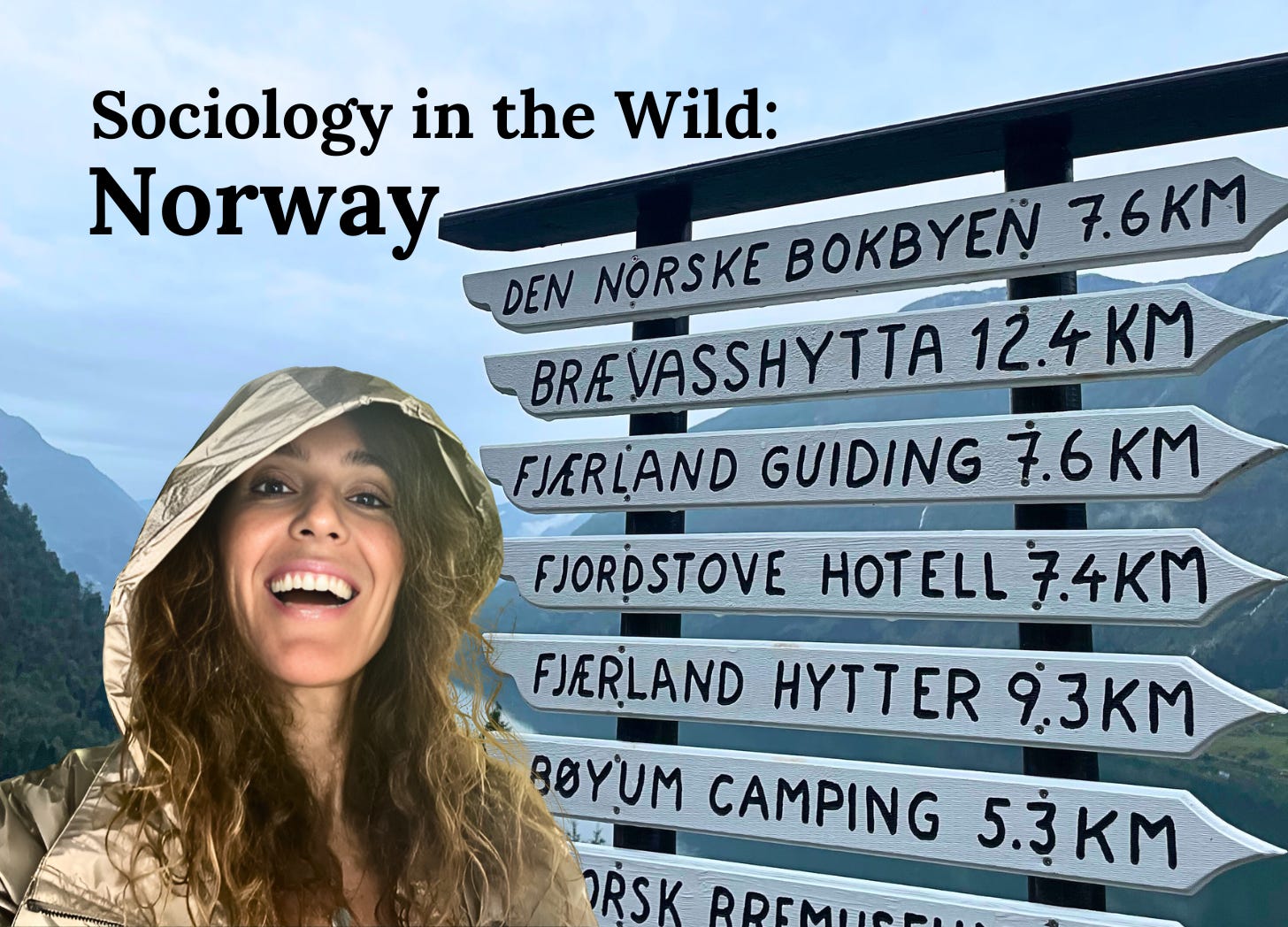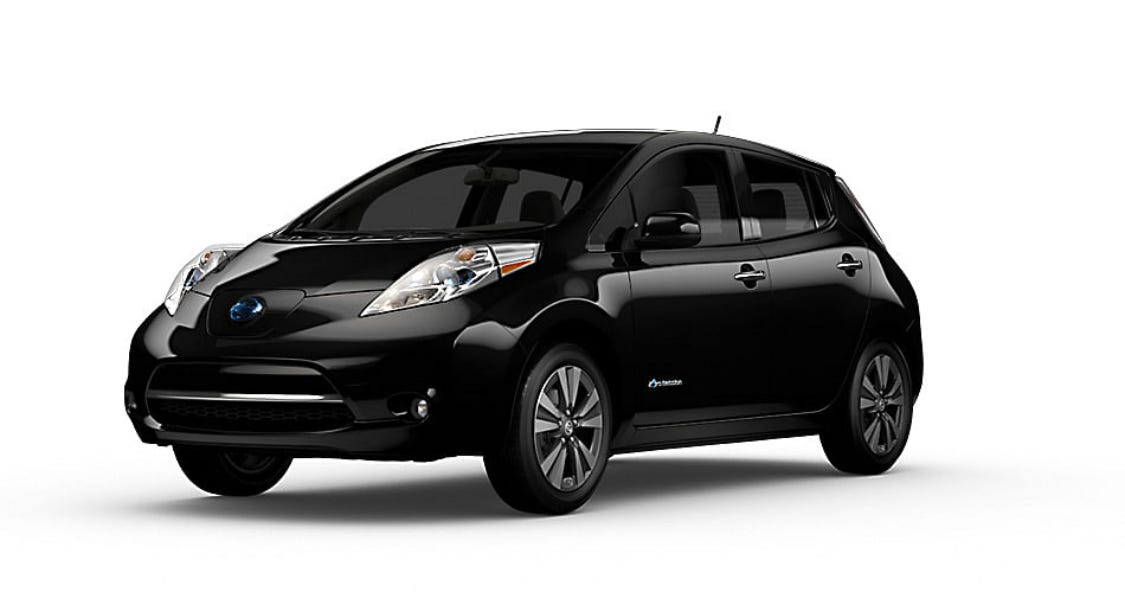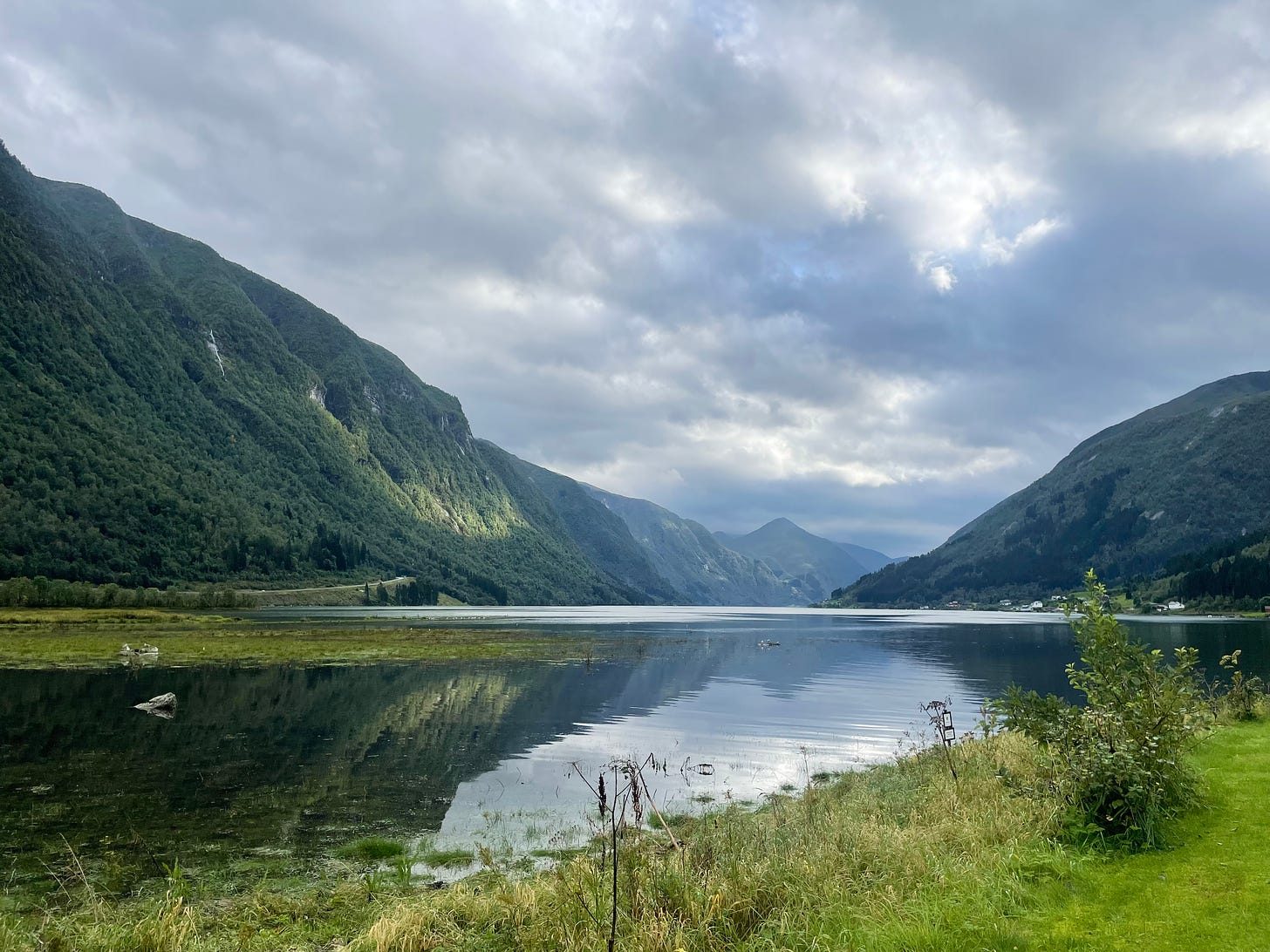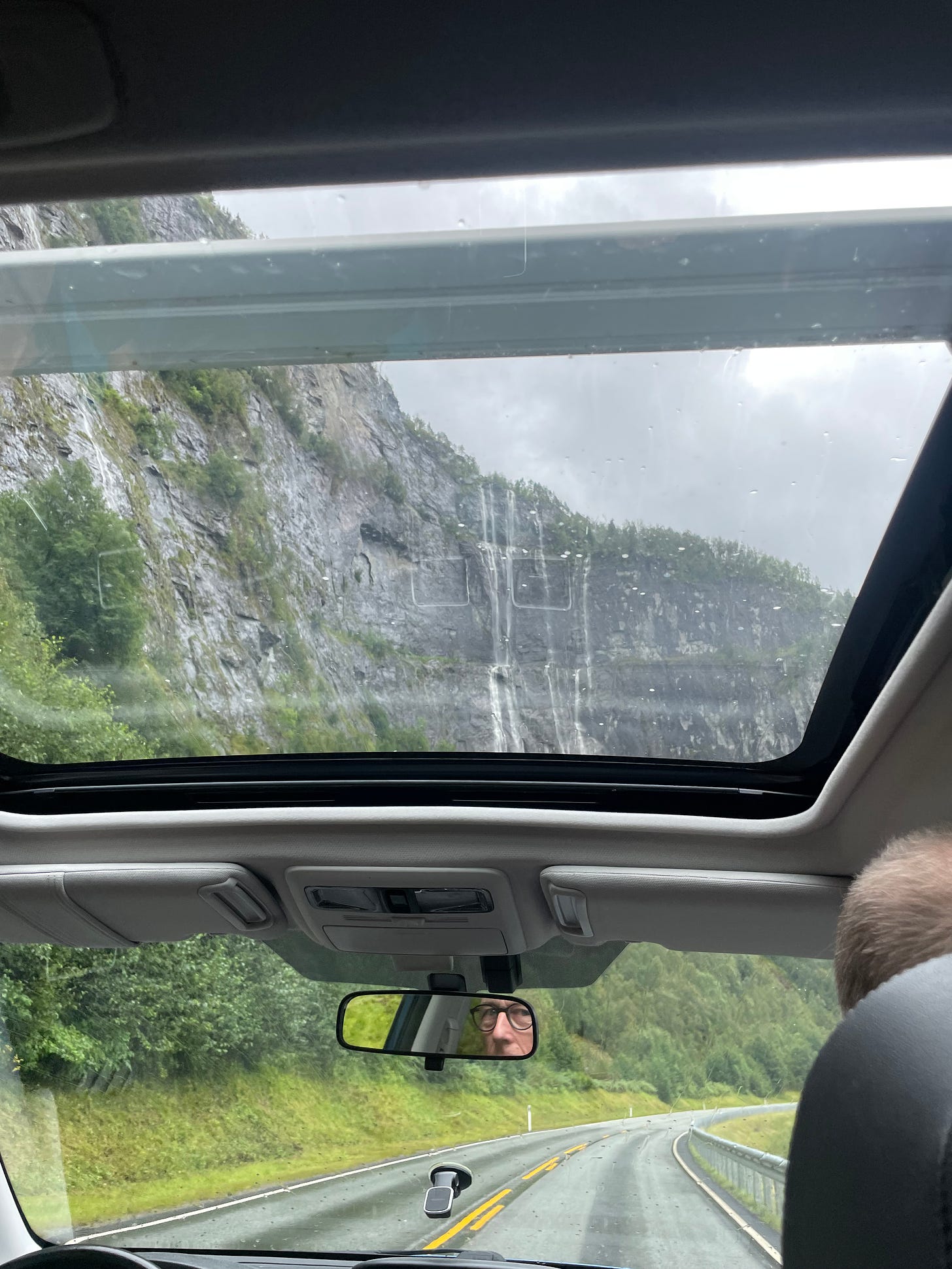Sociology in the Wild: Norway
Electric Cars, Kind Strangers, and Why Travel Begins When Your Plans are Disrupted
I’m launching a new periodic feature this week, which puts a bookend on the past month’s theme of the Sociology of… Travel. Theory is meaningless if we’re not out there in the wild practicing and applying it, and recently, I have been engaging in my favorite type of fieldwork: international travel. Below is a piece analyzing a particular aspect of a journey that became an accidental social experiment.
As always, if this sparks thoughts not only about your own travels, but also your everyday human encounters, please share it in the comments. Next week we launch into a new theme, so stay tuned…
ELECTRIC CARS, THE KINDNESS OF STRANGERS, AND WHY SOMETIMES EVERYTHING GOING WRONG DELIVERS THE BEST EXPERIENCES
I’ve had a few failed attempts at frolicking in the fjords of Norway over the years, but this August, I finally made it happen. I’m a seasoned traveler, but there was one challenge I anticipated on my Norwegian road trip: the driving. I’m a fine, possibly even good driver, but it’s not an activity I particularly enjoy. Thankfully, the Norwegian roads are excellent and amongst the safest in the world, plus, they drive on the right (as opposed to the wrong…) side of the road. The only potential hurdle was the electric car factor. I’ve never owned or driven long distance in a fully electric car, but I did some due diligence and was assured by the owner that their car would only require one charge midway along a 200km trip. I was also assured charging stations were abundant due to Norway having the most electric cars per capita in the world. I was prepared. What could go wrong?
Well. A lot, evidently.
Travel begins when your plans are disrupted.
Meet the 2015 Nissan Leaf. I can already feel you electric car people rolling your eyes and saying: “But this is a first generation electric car! What did you expect?!” I’ll tell you what I expected: That it would run much like any old car, where it might not be fancy or super fast, but generally reliable and sufficient for getting from A to B. However, as with many things in life, sometimes you just don’t know what you don’t know.
I rented it via Getaround, a sort of “Airbnb for your car,” and the car’s owner, Kristen, was out of town for the weekend, so her 20-year-old son, Daniel, delivered the car to me. I needed to drop him back at their home on the outskirts of town, and when we stopped, he suggested that we top up the car’s charge for a few minutes — I LOVED that idea — and he invited me in while we waited.
Daniel is half-Norwegian and half-Romanian, though he grew up in Norway. His Romanian aunt, Elena, who emigrated to Norway years ago and has since learned the language, was staying with them. The rain was coming down with a ferocity that must be seen to be believed (see below), and I was soaked, head to toe. Daniel heated up some homemade cinnamon rolls while his aunt prepared tea for me, then found me a “proper” raincoat and insisted I take it with me for my journey.
Daniel is a freshman in college and had recently returned from a gap year in Lapland, working amongst the Sami. As we ate our cinnamon rolls, he pulled out his scrapbook from the experience, complete with photos printed on A4 paper and handwritten notes and descriptions. I didn’t realize that renting a car from Getaround would include a full Norwegian cultural exchange, in-home refreshments, and all-weather gear, but I wasn’t complaining. Europcar, this was not.
Unfortunately, it was all pretty much downhill from there. After dropping Daniel and his scooter somewhere at the base of the mountain (again, a welcome but unexpected addition to the rental experience), I started the first leg of my trip, pulling over to charge about 90 minutes later. The car was nearly on empty by then, and I quickly learned the two main hurdles that would vex me in the days to come:
1) There is a LOT of variation in charging stations — different types of charging outlets, different voltages, different processes with different brands. (All new to me.)
2) One cannot simply pay for the charge with a credit card. (Come again?)
The first issue required a bit more trial-and-error than is ideal with a car that runs out of charge far more often than I need to pull over to pee, but it was (usually) achievable, if often inconvenient. The second, however, presented a far larger and more insurmountable issue. Let me see if I can explain it in an efficient way, for those of you who like a deep-dive into these things:
Norway loves electric cars. They have a lot of charging stations, run by many different companies. Each company wants to encourage (demand) loyalty from its customers. So they require payment via either their unique app or a rechargeable fob. The fob is not easily acquired on the fly, which leaves the app. To use the app, one needs an account. To create an account, one needs a Norwegian phone number to verify the account via text. (Not possible.) The only other alternative is to pay via the Norwegian mobile payment system, Vipps. To use Vipps, one needs a Norwegian identification number. (Also not possible.) You see the challenge.
What isn’t an option at seemingly 99% of the charging stations? PAYING BY CREDIT CARD. This was not an issue I anticipated. After slow-rolling into one abandoned charging station at 10pm on a Sunday in a remote fjord with literally 1km of charge left (hello, stress?), I knew this madness was unsustainable.
Like any high-brow academic, I therefore immediately turned to the world’s most reliable source: Reddit. Reddit was MADE for this type of issue. Yet I didn’t come across any solutions, only other people complaining about charging as a foreigner in Norway.
While the internet failed me, I was tipped off to downloading an app (Elton) that does allow foreigners to create an account and upload their credit card — but, alas, this only works for some of the stations and requires crossing a few too many fjords for stress-free driving.
Fed up with technology, my next solution was a bit more analog: approaching strangers and paying them to let me use their account. Let me just say: if you find yourself in a remote area with an electric car and you think, “Gee, I’d like to run a sociological experiment on the local population,” might I suggest asking strangers if you can use their private accounts on their phones? People generally love that. But, desperate times.
The first man I approached worked at the Glacier Museum in Fjærland, as the only charger in town happened to be in their parking lot. After exhausting all other possible solutions, he — to his credit — was the one that suggested we use his account (after I strongly steered the conversation that way. Pro tip: great to let them think it was their idea, if possible.) He didn’t ask for money, and the full charge cost less than $10, but I gave him a €20 bill I had leftover from Germany. (I rarely carry cash in any currency, so were the Germans not so cash-obsessed, he might have had to settle for a snack in the museum cafeteria and a lot of “good vibes.”) Despite Norway not using the Euro, he told me his wife was heading to Italy soon and could use it. Everyone wins!
It’s worth noting (as I’m sure some clever reader will surely point out) that Norway has a new mandate to allow credit card payments at all fast charging stations by 2025 — something that seems obvious in a country with a population of just 5.5 million but which hosts some 8 million tourists each year. (Though maybe this is strategic revenge on unwanted travelers? Did Agnes Callard design this system??) So if you visit next year and think I’m making all of this up — well, your timing is just far better than mine. So don’t feel too superior!
During another particularly frantic, desperate moment at a charging station in a grocery store parking lot (I hung out in a lot of parking lots), one of the employees at the grocery store walked out to see what was happening, perhaps because I was striking up conversations with everyone who innocently pulled up to charge. I explained the situation to him, certain he would have encountered this problem before (I’m not the first foreigner to charge a car!), but he was equally stumped — which, on the one hand, made me feel decidedly less stupid, but on the other, did not help me get home. Moments later, his wife and their two stunningly cherubic children popped up out of nowhere. This was now a car club meeting and a family reunion all at once.
While the men tinkered with the charging station, the woman (as usual?) cut right to the chase and laid out the situation perfectly: “Oh, the Nissan Leaf! I had this car. It says it has 100 km left, and then suddenly it has less than half of that. You can never rely on anything it says. It’s really stressful! I had to get rid of it.”
YES! She felt my pain! She knew the struggle! It wasn’t me, it was the car! BUT… I needed that POS car to get me somewhere warm and dry for the night. This was no time to make the Leaf my enemy.
The car was on empty and wouldn’t start for the better part of ten minutes (SO.MUCH.STRESS.), but perhaps due to the pep talk I gave it or (more likely) thanks to some electric car mechanism I had no idea existed, I was miraculously able to drive the 4 km to the charging station the attendant’s wife thought would work. As grateful as I was for its final heroic effort, I knew it was time for us to part ways.
So, while roasting a moose at my farm stay (tender, succulent, oh-so-delicious!), I searched for alternative vehicles and messaged Kristen to coordinate the logistics of returning her car — ideally without driving all the way back to Bergen. 18 hours later, after countless calls with Getaround and their unimaginatively named roadside assistance company, Viking (shoutout to Julie and Elias!), we devised a plan. I had resigned myself to returning to Bergen to start my journey over and would hitch a ride back with Kirsten and her friends, as they were in a nearby town having lunch. She would drive her car back, while I piled in with her travel companions. I’d lost the better part of two days to obsessing over this car, but I continued to tell myself that this was part of the adventure and that I was safe (so far), dry-ish, my belly was full of game meat, and I was encountering some very nice people. Things would work out.
Kirsten’s travel crew and I had a few rather tense-but-polite phone calls on her friend’s phone, so I wasn’t sure what to expect on our cozy, impromptu road trip. And, despite my internal “IT’S ALL FINE” mantra, I was exhausted from days of high-level logistical planning more suitable for going into battle, not a vacation rental car. But when my Norwegian rescue team strode casually out of the restaurant, they were the embodiment of serenity. These people were unflappable. Hike for hours in challenging conditions to get to your unheated cabin for the night? But of course. Come to the aid a weary American girl tortured by your outdated car? Naturally. Their ancestors didn’t travel several thousand miles in a glorified wooden canoe without learning how to solve a few problems. Resourcefulness, I knew I would encounter. But what I didn’t expect was their overwhelming warmth.
Arild, Kristen’s travel companion who’d served as my primary phone liaison, grinned and marched straight up to me. “I think you need a hug,” he said as he enveloped me in Gore-TEX. I nearly burst into tears.
I needed to not only get back to Bergen but also find a new car to rent using Getaround (as they gave me a credit and it would now be outrageously expensive with the traditional rental agencies), then drive another 4 hours to my next stop by that night. It was already 3pm. There was a chance I wouldn’t make it. “If you can’t find a car or it gets too late, I have a houseboat that I rent out in Bergen. You are welcome to stay there for free,” Arild, my new favorite person, generously offered.
While Ingrid, Anders’ wife, quietly knitted next to me in the back seat, Anders told me about their daughter, a musician, who studied at a conservatory in the US and now lives in a suburb outside of LA with her Japanese-American husband and their Japanese-Norwegian-American baby boy. They told me tales of their first American Thanksgiving and how they’d also learned to eat with chopsticks.
While we stopped for Kristen and the Leaf to refuel (so happy to pass that baton), Arild explained that, should I not secure a new car and need to spend the night, I could either go straight to his houseboat, or, if I wanted to go on an adventure (another one?) I could join him in a visit to see his girlfriend — at the home she shared with her husband. Oh boy. Things were just starting to get interesting when I, somewhat reluctantly, found a new rental car.
“Where do you live?” they asked me at one point along the ride. “I live with you now,” I said, planting the seed — just in case.
When things are going smoothly, travel can be an exhilarating adventure. But when stuff gets hard and things don’t go as planned, three key factors come into play:
What have I done to prepare? (Though, as previously noted, the more you travel — or just live — the more stuff you realize you can’t plan for.)
How resilient and resourceful am I? What have I learned along my life journey that can help in this moment?
How will my “hosts” receive me in my state of need?
The first two are about me, but the third variable is the piece of the travel puzzle that makes the biggest difference as to whether or not the inconveniences and stressful detours ruin a trip or enhance it. It goes without saying that, unlike when we visit someone’s home, we don’t notify our unwitting hosts when we travel to their country. We don’t ask what we can bring, then inevitably arrive with a bottle of wine to thank them for their hospitality. We just show up. So when things go wrong in a foreign place — and, I can’t stress this enough: they always do — we, the unannounced guests, must hope that our hosts will feel empathy when they find us distressed.
I have been in countries and cultures where this situation would have (and has) played out very, very differently. (I’m sure you can think of a few.) In nearly all of those instances, it was not that things didn’t go as planned, but rather the encounters I had through that process that turned me off from continuing to live in or spend time there — despite whatever “good stuff” that place offered.
It’s not unlike any human relationship: the test of its mettle is not when things go well, but when speed bumps emerge.
During my electric car crisis, I relied on two things: my own tenacity (not to be underestimated) and the kindness of strangers (always underrated). You need both. I relied on the Glacier Museum man’s account. The grocery store attendant’s wife. Daniel and Elena’s cinnamon rolls and rain gear. The moose meat from my farm host. Kristen’s merry band of travelers who not only soothed me, but moved all of my luggage between their cars three times in the pouring rain. (“This is my car,” Anders explained, “I sold it to Arild, but sometimes he needs to use the trailer, so we switch.” Don’t try to make sense of it.) Not to mention the perpetual patience and dedicated problem-solving of the owner of my NEW Getaround car (oh yes, don’t think I fully turned a new leaf when I turned in the Leaf…). And many more moments of generosity and good humor than I have space to detail here. These are people I’ll remember long after the dramatic vistas fade from memory.
You know the saying: once is an accident, twice is a coincidence, three times is a pattern? One cannot generalize an entire country or people based on a single interaction. But when the majority of encounters — and, specifically, high stress encounters — produce a similar type of exchange, that is a pattern, not an accident.
The Gottman Institute estimates that 69% of relationship problems are unsolvable. Which suggests that, often, the path forward in relationships and random social encounters alike is to learn to live with or mitigate a situation, even when you can’t eliminate it. That didn’t mean I had to accept a half-functioning car, but it did present an opportunity for connection through crisis, which can be more satisfying than if we’d been driving a well-charged Tesla all-along — with the right partner.
This might be a good time to talk about Norwegian stereotypes. They are known for liking space. For being reserved. For really, really liking the outdoors. They are the hearty Nordic Cowboy neighbors to the slightly more precious Swedes (love you, Swedes!). What they are not as well-known for, however, is their humanity and their humor. I found both in abundance and that — far more than the awe-inspiring natural beauty — is why I fell in love with Norway.
Why do we travel? To see? To learn? To do? To share envy-inducing photographs? Too seldom, our approach to travel fails to prioritize and celebrate the variable most likely to win us over or make us miserable: the people. As I wrote in the first article in this series, “The magic of travel is the uncertainty.” For me, that element of surprise is never more salient than in the unexpected connections I make along the way, especially when everything goes awry.
[Disclaimer: This post is not sponsored by Visit Norway… yet :) ]










FELICES SOCIOLOGY Y SOCIOLOGIA
Yas